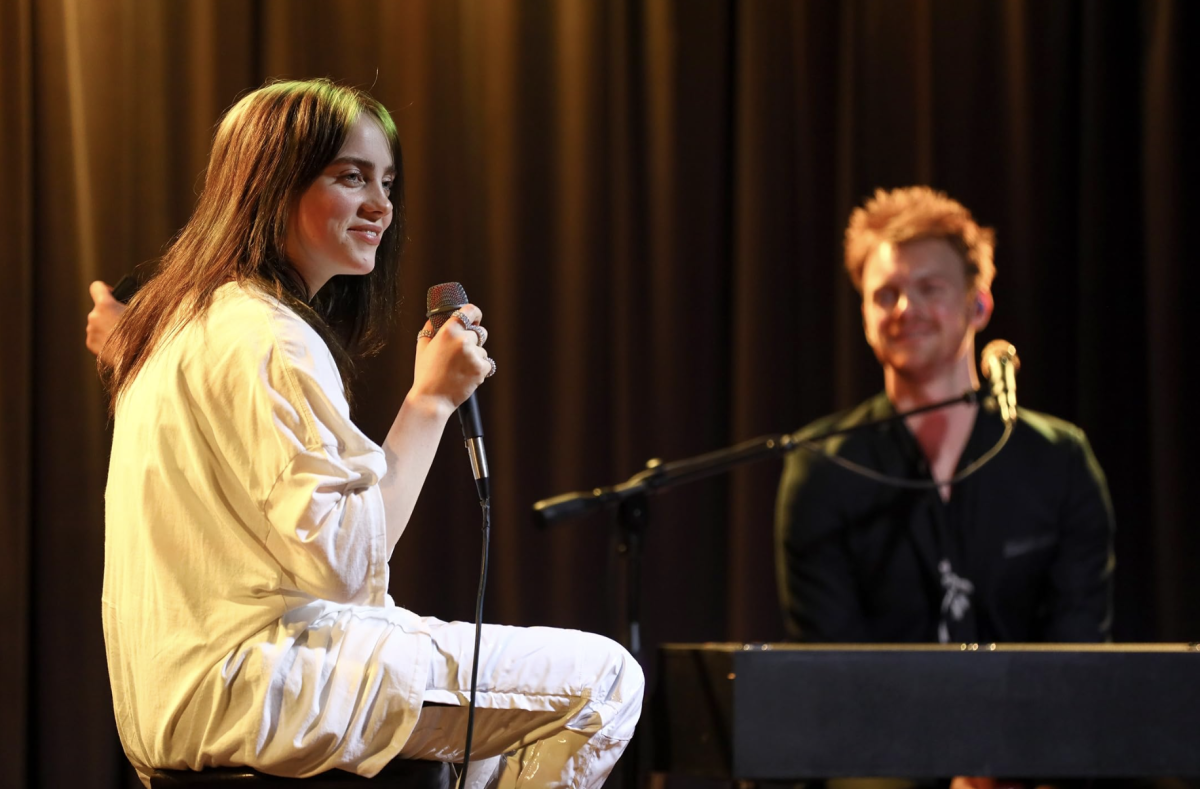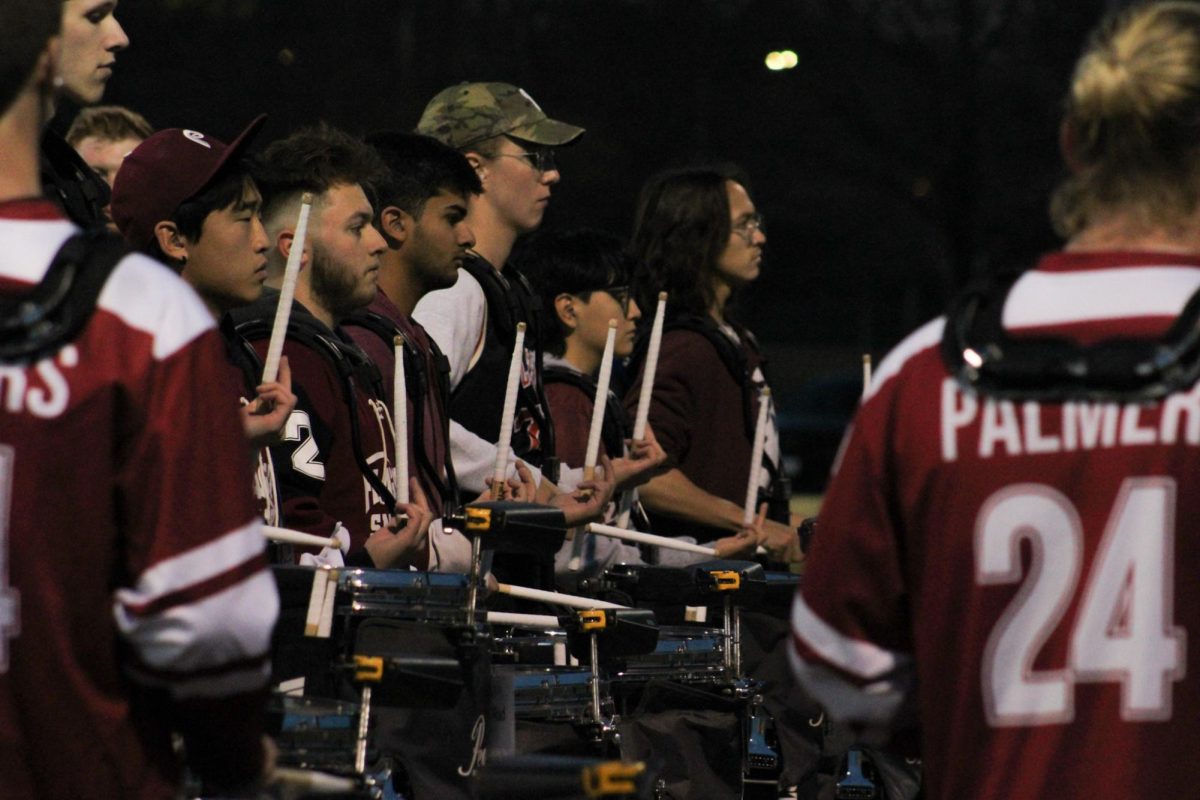
“Lord of the Dance,” which played the Mullins Center on Thursday, advertises itself as “the world’s greatest dance show,” but it no longer lives up to that reputation. It has been reduced to little more than a sparkle-filled extravaganza with none of the authenticity that made the original 1996 filmed production so elegant and breathtaking.
The show uses Irish dance infused with elements of jazz and modern dance, as well as a vocalist and a pair of violinists, to tell the story of the titular Lord of the Dance. He has a seemingly perfect life with a perfect girl, Saoirse, until Don Dorca, the evil lord, and his warriors arrive to steal the Lord of the Dance’s power. Dorca uses everything from an epic staged battle to sending Morrighan, a temptress, to try to defeat the Lord of the Dance. As with most battles of good vs. evil, the good Lord of the Dance triumphs.
Michael Flatley, the choreographer and overall creator of the show, is no less than a gift from the heavens to dance. From the fast-paced hard shoe tap number, “The Warriors,” to the soft and beautiful duets between the Lord of the Dance and Saoirse, every dance is simply astounding. The joyous group number, “Siamsa” is exquisite. It was the only number that remained completely unchanged from the original. Every ounce of fame that Flatley has is well earned for his ability to convey emotion and story through dance.
The cast of the show executed Flatley’s choreography exquisitely. Bobby Hodges, who played the Lord of the Dance, had massive shoes to fill, as the role was originally portrayed by Flatley, himself. Rather than trying to do the impossible by mimicking Flatley’s ego-filled portrayal, Hodges brought boyish charm and determination to the role. After 15 years of having only seen Flatley’s Lord, this new rendition was refreshing and exciting. Aisling Nally took the role of Saoirse, and completely turned it around. Rather than going the typical route of making her a helpless little ingénue, Nally played her as strong and having her own sense of power, rather than just being the Lord of the Dance’s good little girlfriend.
Morrighan, played by Maeve Donaghy, was less than exciting. She tried to play sexy rather than focusing on drawing the audience in. Morrighan is an incredible and rare role, and Donaghy wasted the opportunity.
The standout among the dancers was Ciaran Plummer as Don Dorca. Unlike the playful showman Lord of the Dance, Plummer drew the audience in, without having to try for it. It’s a great understatement to say that his ability in the fast-paced tap sequences was stellar.
Ronan Hardiman’s instrumental music has always been and still is exquisite. In this over-inflated production, the instrumental music was one of the few remnants of the simple and authentic original show. As beautiful as the instrumental music was, the music written for voice was just as weak. There was only one song in the original Gaelic language, with the rest being in English. Though a singer walking back and forth across the stage is not nearly as interesting to watch, more Gaelic songs would have helped with bringing an authentic flair back to the show.
Mary-Ann Roddy, the only singer in the show, had a rather nasally mezzo-soprano as opposed to the traditional, ethereal-sounding soprano. No one goes to see “Lord of the Dance” for the singing, and her weak voice made her scenes even less interesting.
Luckily, violinists Anne Hatfield and Carolyn Bartley recovered the musical integrity of the show. Not only were their instrumental performances masterful, but they actually started dancing while playing Hardiman’s incredibly complex music. Their incredible skills as violinists make them incredible to listen to, and their visible joy for their art makes them fun to watch.
The designers of this “revamped” production of a classic committed no less than an artistic crime. The costumes were full of bright colors and sparkle that belong in a Disney-backed Broadway show, but certainly not in “Lord of the Dance.” Worse than the costumes were the horrible projections: distracting swans, maps and, worst of all, red and black outlines of girls dancing sexually, all of which drew attention away from the dancers. The latter projection looked like it would fare better outside a cheap strip club rather than what is supposed to be a beautiful Irish dance show. It takes a lot of work for design elements to ruin an otherwise decent show, but these designers managed it.
Fifteen years ago, this show was simple, authentic and based in beautiful tradition. Now, it is an over-glossed and sparkly impostor of the original. Maybe one day, Michael Flatley will do away with the big-Broadway feel of this touring production. The minute that day arrives, rush to the box office for tickets, because this show has been and can be so much more than what it is now.
Alissa Mesibov can be reached at [email protected].













Trace • Aug 9, 2013 at 11:35 am
Do you know the name of the second song played by the duelling violins in Lord of the Dance? It starts at 1:32 into the medley.
Thanks.